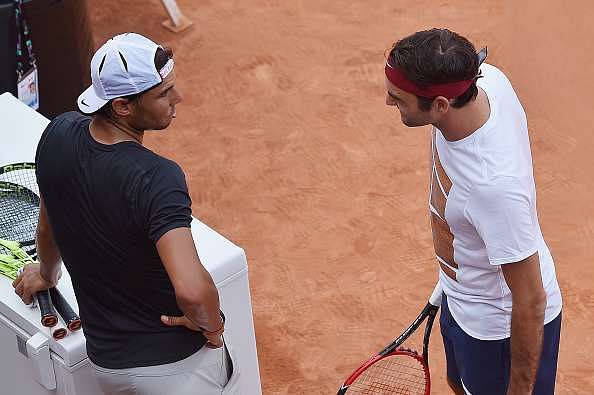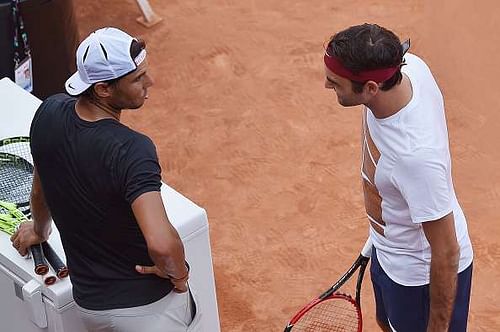
Rio Olympics 2016, Tennis: Are we witnessing the end of a tennis era?

With only days to go for the Olympic Games in Rio 2016, several of the top seeds have pulled out of the tournament, leaving a fairly sparse singles field. While a number of younger players have withdrawn due to fears of the Zika virus and some due to injuries, the lion’s share of withdrawals have come from older players, many of whom have been missing more and more tournaments in recent times.
Key among these is Roger Federer, who has been beleaguered with a slew injuries over his career, but this year has found it difficult to be able to continue as he has in the past. After withdrawing from a number of clay court tournaments – and then the French Open, Federer played out of his own skin at Wimbledon, managing a close semi-final finish before eventually crashing out.
He is not the only player to do so, although he may be the most high-profile of the lot.
Spanish ace Rafael Nadal, who won the men’s singles gold in 2008, is also among an ‘older’ crop of tennis players – not necessarily in chronological age, but in terms of his career. Although he has had a very successful 2016 clay court season, the Spaniard has seen himself stricken by a wrist injury that has been healing slower than he says he would have liked.
Another key name that many tennis watchers will remember is Marcos Baghdatis. The 31-year-old Cypriot, a former top-10 player, entered the 2006 Australian Open unseeded – and proceeded to defeat a number of the top-seeded players, eventually facing top seed Roger Federer in the final.
He would even manage to scalp the first set off the Swiss, pushing him to the brink in the second before eventually tumbling in a four-set loss.
Marcos Baghdatis on the downswing
Baghdatis, who peaked with that final, also made the semi-finals of Wimbledon that year – but in two quick years saw tournaments cut short by repeated injuries. After a couple of relatively low-key years, on the professional circuit, managed a comeback strong enough to take on two number one players – Roger Federer and Rafael Nadal – at the time that they were the reigning top-ranked players.
Sadly for him, that was short-lived, and a flagging Baghdatis then found himself a regular presence on the Challenger tour instead, a sharp downturn from his previous form. He struggled at the time even for wildcard entries at ATP events, a stark contrast to the Baghdatis of old.
Although he has found some modicum of form recently, Baghdatis has been far from the player he once was. Struggling with injuries, the former No. 8 now has longer recovery times to deal with, in addition to a quickly rising crop of powerful young players whom even the top-ranked are struggling to contend with.
He re-entered the top 40 earlier this year, but has struggled since, and has displayed patchy form despite his doubtless skill. At 31 and struggling back and forth with his performances, it is doubtful that the Cypriot, whom many will remember from the early part of the decade, will return to the Baghdatis of old.
Rafael Nadal – a wristy affair
Although Nadal has been pictured in Rio de Janeiro, the extent of his Olympic participation still remains uncertain. Due to participate in the singles and doubles, the Spaniard, struggling with a wrist injury that saw him miss a 2016 French Open campaign, followed by Wimbledon, and now he is unsure if he will participate entirely in Rio.
The 30-year-old is still recovering from the injury that has given him serious trouble and impacted his serve immensely. There has also been intense speculation that Nadal may choose to play only one discipline – either the singles or the doubles, with strong talk to suggest he may choose only to play the men’s doubles event.
Barring a spectacular clay court season, Nadal has been forced to withdraw from an increasing number of tournaments with injury; even on his favourite surface, the Spaniard has seen shock losses to players ranked far lower than himself – despite being perhaps the undisputedly greatest player of all time on that surface.
This year, he also saw a shock loss – his earliest at a Grand Slam – at the year-opening Australian Open. He has also been tumbling to some of the youngest talents in the sport – and fans must face that the Spaniard has been finding it increasingly difficult to return from injury.
By the time the 2020 Olympics roll around, Nadal will be only 34 – as old as Roger Federer is now, but has not displayed a tendency for the longevity or recovery that the Swiss has. It is likely that Nadal will be playing his last Olympic games this year.
Roger Federer – fading gracefully?
The big one. 34-year-old Roger Federer is universally considered the greatest of all time, and much has been written about the Swiss legend’s sustaining career. Despite this, he has silenced detractors on a regular basis, most recently at Wimbledon.
But at 34, and already the oldest player in most draws on the ATP circuit, has already seen his best years behind him. It is highly unlikely that a 38-year-old Roger Federer will be a medal contender in 2020 – making this his final shot at the Olympics. The Swiss has said he is looking at a ‘few more years’ of 100% competitive tennis’, which puts him, at a conservative estimate, to playing until 2018 – and even then, it would be unfair on the Swiss for fans to expect him to perform at the levels he once saw.
Read more: Is this the beginning of the end for Roger Federer?
There have been blockbuster performances from the Swiss, but not only have they been a flash in the pan, they no doubt put immense stress on a body that has already been subject to a number of injuries over the years.
All in all, with most of the old guard of tennis moving forward, it is time for newer, younger, more powerful players to replace them – and perhaps put a spanner in the works of what can now only be described as a Novak Djokovic-dominated era.